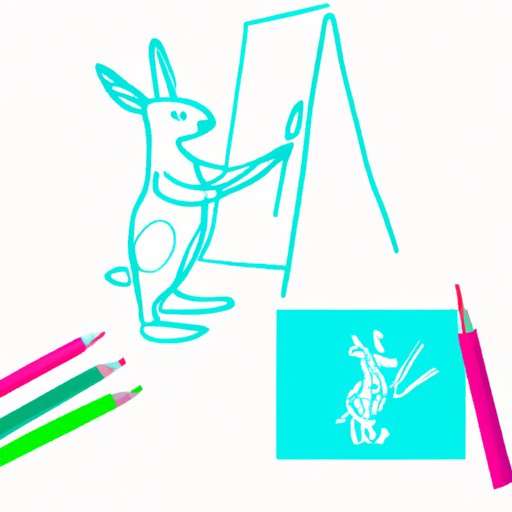
Introduction
Drawing is a popular form of self-expression and a great way to explore your creativity. Whether you want to create realistic portraits, express your emotions through abstract art, or simply sketch for fun, learning how to draw is an enjoyable and rewarding hobby. However, for beginners, drawing can be a challenge. That’s where this article comes in. In this guide, we will provide you with step-by-step tutorials, video resources, tips and tricks, inspirational articles, and problem-solving techniques to help you improve your drawing skills regardless of your skill level.
Step-by-Step Tutorials
One of the most effective ways to learn how to draw is through step-by-step tutorials. Breaking down the process into manageable steps makes it less overwhelming and easier to follow. Starting with simple objects such as fruits or vases is a great way to develop the basics. Here’s an example of how to draw an apple:
1. Begin by sketching out the shape of the apple. Keep it simple and basic.
2. Next, draw the outline of the stem and the leaf. Be sure to pay attention to the proportions.
3. Add details to the stem and the leaf. Shade in the leaf and add texture to the stem.
4. Finally, add shadows to create depth and give your drawing a realistic look.
Remember, practice makes perfect when it comes to drawing. Repetition is key to improving your skills.
Video Tutorials
While written tutorials are a great starting point, watching someone draw firsthand can be even more helpful. That’s where video tutorials come in. They allow you to follow along in real-time, pause and rewind when necessary, and watch as the artist creates their drawing from start to finish. Resources such as YouTube and Skillshare offer a variety of video tutorials to choose from. Start with easy tutorials that will build your confidence and gradually move on to more complex ones.
Tips and Tricks
Expert tips and advice can help you advance your drawing skills. Here are some key tips for drawing success:
– Use the right materials. Invest in quality pencils, erasers, and paper.
– Practice perspective. Understanding how objects appear in space makes your drawings look more realistic.
– Add shading and texture. Use shadows and highlights to create depth and texture in your drawings.
– Learn from your mistakes. Analyze your drawings and figure out what worked and what didn’t.
– Learn the basics first. Start with simple subjects and work your way up to more complex ones.
Inspirational Articles
Sometimes all you need to keep your motivation going is a little inspiration. Articles featuring quotes, interviews with famous artists, or meditative experiences can help. Look for content that resonates with you and keep it handy for those moments when you need a boost.
Problem-Solving
Common problems with drawing can be frustrating, but they are also an opportunity to learn. Some tips for problem-solving include:
– Take a break. When you’ve been staring at your drawing for too long, taking a break can help refresh your mind.
– Seek constructive feedback. Ask family or friends for their honest opinion and take their advice to heart.
– Practice, practice, practice. The more you draw, the better you’ll become.
Conclusion
Drawing is a skill that anyone can learn with practice and patience. With step-by-step tutorials, video resources, tips and tricks, inspirational articles, and problem-solving techniques, beginners can improve their skills and create beautiful drawings. Remember to be patient, keep practicing, and enjoy the journey.





